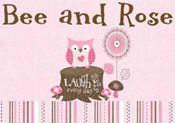 I was incredibly psyched when a representative from Workman Publishing contacted me to review an advance copy of the second edition of Curly Girl. I devoured the first edition and it became my Bible for curly hair care. I read this expanded edition more thoroughly than I did the first--and allow me to say, it's much more comprehensive, detailed, and illustrated than its predecessor.
I was incredibly psyched when a representative from Workman Publishing contacted me to review an advance copy of the second edition of Curly Girl. I devoured the first edition and it became my Bible for curly hair care. I read this expanded edition more thoroughly than I did the first--and allow me to say, it's much more comprehensive, detailed, and illustrated than its predecessor.Allow me to compare some of the differences:
- In the first edition, author Lorraine Massey wrote about three types of curly hair: corkscrew, botticelli, and wavy. In this new edition, there are seven types of curly hair. I appreciated this because I always felt that I fell between corkscrew and botticelli. Massey includes more detailed descriptions of each type of curl, and, better yet, photographs of each one.
- There is a DVD included with this edition. In the DVD, you can watch how one cleans and cares for curly hair, depending on your curl type. This is the portion of the book that I appreciated the most, because I could see firsthand how I should specifically care for my hair, as opposed to just reading the text and deciphering photographs.
- Massey has added several new chapters to the book. My two favorite ones were about curly-haired men and "chemo curls." I was grateful that she included the chapter about guys and curls, because when it comes to hair care, the male population is sorely neglected. And Massey tackles the sensitive topic of losing hair from chemo treatments, then growing it back, with gentleness and aplomb.
According to one of the statistics in this book, over 65 percent of the population has some form of curly hair. One would never know it, though, since there are so many who invest in products to straighten, blow dry, and get rid of their curls. I must confess that I was one of those girls. But I am here, as a ringleted sista, to implore you to embrace your hair's natural texture. My curls are a part of who I am; it's one of my personal fashion signatures. It took me awhile to get there, but thanks in part to Curly Girl, I was able to do so. I am grateful for Lorraine Massey's help, and I hope that she helps you in the same way that she did for me.


























































